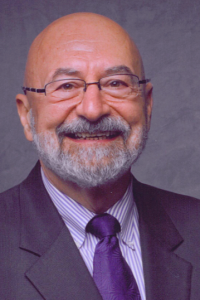In his Daily Meditation of February 6 on 1 Corinthians 12, Rev. Richard Rohr writes “Humanity consistently has to face the problem of unity and diversity. We’re not very good at understanding it. We habitually choose our smaller groups, because we don’t know how to belong to a larger group. That demands too much letting go.”
He notes that Paul’s doctrine of the Body of Christ “isn’t easy for Westerners to understand, because we are deeply trained in cultural individualism. So much so, we don’t even recognize our lack.” It seems impossible that anyone with eyes and ears open could fail to recognize the pervasive individualism in our country. For many, the synonym of “it’s a free country” is “you can’t tell me what to do.”
One advantage of belonging to a large group with internal diversity like the ELCA is that we can see varied cultures within a group whose defining culture we share. During Arab American Heritage Month, I would like to discuss an element of Arab-Middle Eastern culture that might help elucidate a different way of being in a group, a way of “letting go.”
For most of my life, the common translation of the Transfiguration story in Mark included a voice saying, “This is my beloved Son.” In more recent translations, we hear, “This is my Son, the Beloved.” These two versions may sound pretty much the same, but they are not. In the first, “beloved” is an adjective describing the son; in the second “beloved” is a name for the Son, an identification by relationship.
Almost anyone who has grown up in an Arabic-speaking family – even a person who didn’t master Arabic – knows the Arabic (and Aramaic) word for “beloved.” It is a word we have heard dozens of times a day as parents and grandparents call to us and our siblings: habibi/ habibti. “Ya habibi, tha,” they might say. “Oh, my Beloved, come here.” While it sounds stilted in translation, it sounds quite appropriate in context. Importantly, it constitutes the replacement of a name by a relationship.
For many of us represented by the groups of color in the Church, our personal cultures insist that one’s identity is, at least in part, other-oriented. We shape identities based on our family and our community. In the case of those of Arab and Middle Eastern heritage, there is a sense that we are nothing without a family and community to help define us.
The internal relationships of Arab families reflect this cultural reality. Imagine, for example, a young Arab man named Ibrahim and his wife Mariam who have their first child, a son, whom they name Yusuf. From Yusuf’s birth he will be called Ibn Ibrahim, “the son of Ibrahim,” but his parents will also take on new names. They will be from that point on called Abu Yusuf, “father of Yusuf,” Um Yusuf, mother of Yusuf” by friends and family.
I have heard non-Arabs denigrate this custom: “Why should I give up my identity just because I became a parent?” But that is really the crux. This approach is not giving up one’s identity but expanding it in terms of relationships. In Arab culture, one is not defined in isolation but in connection, in relations. And that is a lesson those of Arab-American heritage can share with the Church: we cannot be fully who we are meant to be if we remain isolated individuals.
In his prayer at the Last Supper in John 17, Jesus describes how he views the ideal relationship with us: “that they may all be one, even as you, Father, are in me, and I in you, that they also may be in us … that they may be one even as we are one.” Here, I believe, is the core of Jesus’ prayer and its most complex and mysterious part. When Jesus suggests that his followers can be one as he and his Father are one, he takes us directly to the mystery of the Trinity. In distinction from the other Western monotheistic religions, Christianity alone posits the person of God as built on relationship, a unity without uniformity. In praying that we be one as Jesus and his Father are one, he is envisioning a future in which his followers will take their identity in part from their relationships with others, unified but not uniform.

Dr. Ryan A. LaHurd is a spouse, father of two, and grandfather of five. He served as president of Lenoir-Rhyne University, Hickory, N.C., an ELCA higher education institution, from 1994-2022. Dr. LaHurd, an Arab-American of Lebanese ancestry, has served as a teacher, administrator, author, and leader in many capacities, including with the ELCA Association of Lutherans of Arab and Middle Eastern Heritage. He and his spouse Dr. Carol Schersten LaHurd are members of Holy Trinity Lutheran Church in Chicago.
